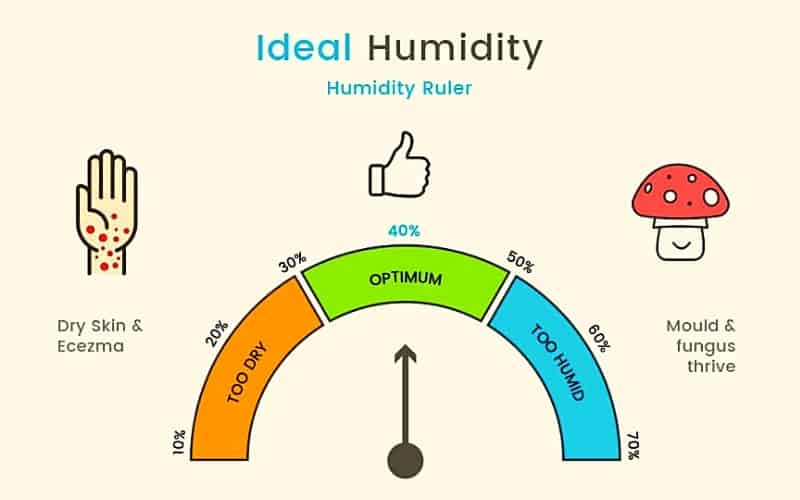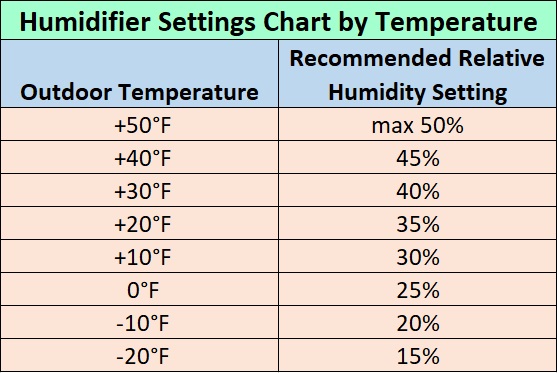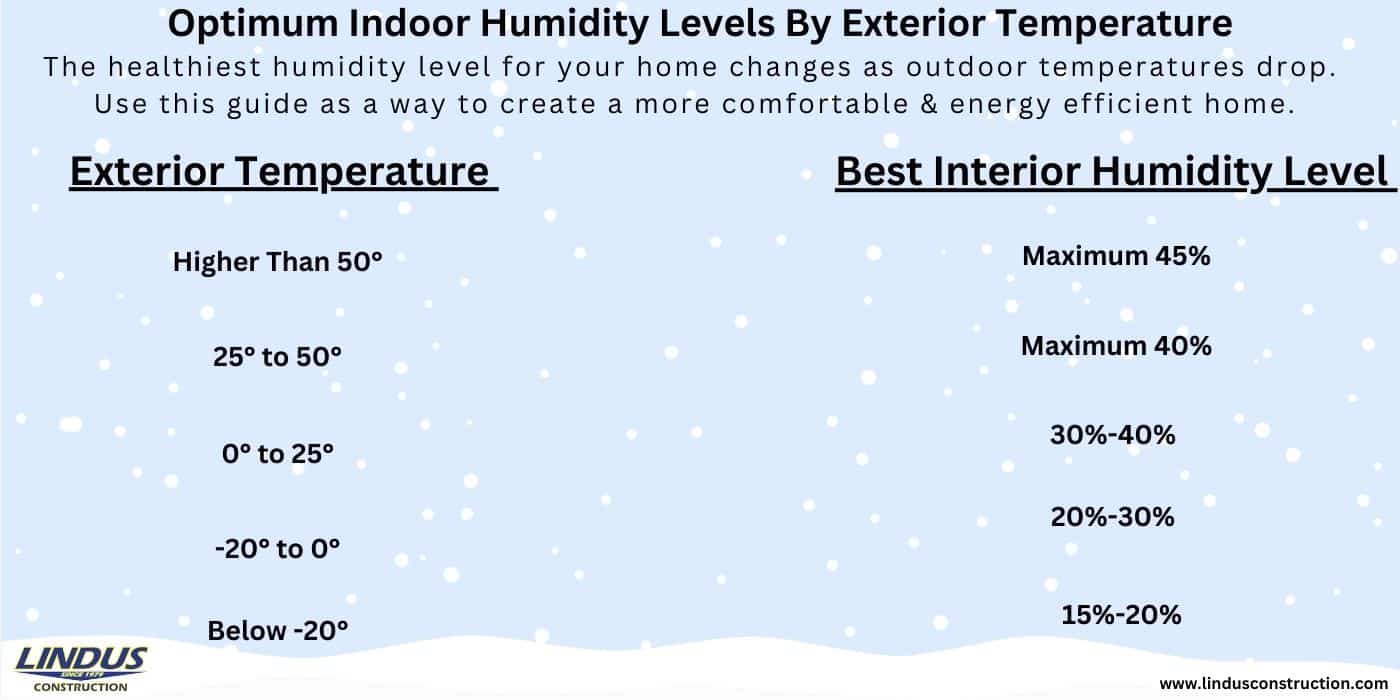How Much Humidity Should Be In Your Home

Maintaining the right humidity level in your home is crucial for your comfort, health, and the preservation of your property. Too much or too little humidity can lead to a host of problems, from mold growth to dry skin and cracked furniture. This guide will provide you with a comprehensive understanding of how much humidity you should aim for in your home and how to achieve it.
What is Humidity and Why Does It Matter?
Humidity refers to the amount of water vapor present in the air. It's typically expressed as relative humidity, which is the percentage of water vapor the air holds compared to the maximum amount it could hold at a given temperature. Imagine a sponge: if a sponge can hold 10 ounces of water and it's currently holding 5 ounces, it's at 50% humidity.
Humidity significantly impacts how we perceive temperature. High humidity makes the air feel hotter because it inhibits the evaporation of sweat, which is our body's natural cooling mechanism. Conversely, low humidity can make the air feel colder because moisture readily evaporates from our skin, leading to a cooling sensation.
Beyond comfort, humidity affects your health and your home's structure:
- High Humidity: Promotes the growth of mold, mildew, and dust mites, which can trigger allergies and respiratory problems. It can also lead to condensation, causing damage to walls, ceilings, and furniture.
- Low Humidity: Can cause dry skin, itchy eyes, and aggravated respiratory conditions. It can also damage wooden furniture, floors, and musical instruments by causing them to crack and warp. Static electricity becomes more prevalent, too.
Ideal Humidity Levels for Your Home
The generally recommended humidity level for indoor environments is between 30% and 50%. This range provides a balance between preventing mold growth and avoiding the discomforts associated with dry air. However, the ideal humidity level can fluctuate slightly depending on the season:
- Summer: Aim for 30-50%. Keeping humidity below 50% is particularly important to prevent mold growth in warmer temperatures.
- Winter: A slightly lower range of 30-40% is often recommended. Colder air holds less moisture, and attempting to maintain higher humidity levels can lead to condensation on windows and other surfaces, potentially causing damage.
Maintaining humidity within these ranges contributes to:
- Comfort: A more comfortable living environment, reducing the sensation of being too hot or too cold.
- Health: Reduced risk of allergies, respiratory problems, and skin irritation.
- Home Preservation: Prevents damage to your home's structure, furniture, and belongings.
How to Measure Humidity Levels
The easiest way to measure the humidity in your home is by using a hygrometer (also sometimes called a humidity meter). These devices are relatively inexpensive and readily available at hardware stores or online retailers. There are two main types:
- Digital Hygrometers: These provide a digital readout of the humidity level and are generally considered more accurate.
- Analog Hygrometers: These use a needle to indicate the humidity level on a scale. They may require occasional calibration to ensure accuracy.
To get an accurate reading, place the hygrometer in a central location in your home, away from direct sunlight, vents, and areas that may be directly affected by cooking or showering. Monitor the humidity levels in different rooms, especially in areas prone to moisture, such as bathrooms and basements.
Controlling Humidity Levels: Too High
If your hygrometer readings indicate that the humidity levels in your home are consistently above 50%, you need to take steps to reduce them. Here are some effective strategies:
- Use a Dehumidifier: A dehumidifier removes excess moisture from the air. Choose a model that is appropriately sized for the square footage of the room or area you want to dehumidify.
- Improve Ventilation: Ensure proper ventilation in areas prone to moisture buildup, such as bathrooms and kitchens. Use exhaust fans while showering or cooking to vent moist air outside. Open windows when the weather permits to allow fresh air to circulate.
- Fix Leaks: Address any leaks in your plumbing, roof, or foundation promptly. Leaks can introduce significant amounts of moisture into your home.
- Air Conditioning: Air conditioners naturally remove moisture from the air as they cool. Ensure your AC system is properly sized and maintained for optimal dehumidification. Think of the refrigerant as the "blood" of your AC system, carrying heat from inside to outside, and also removing moisture.
- Properly Vent Appliances: Ensure that your clothes dryer is properly vented to the outside to prevent moist air from entering your home.
- Address Standing Water: Eliminate any sources of standing water in your basement, crawl space, or around your property.
Controlling Humidity Levels: Too Low
If your hygrometer readings indicate that the humidity levels in your home are consistently below 30%, you need to increase them. Here are some effective strategies:
- Use a Humidifier: A humidifier adds moisture to the air. There are several types available:
- Central Humidifiers: Integrated into your HVAC system to humidify the entire house.
- Console Humidifiers: Portable units that can humidify a larger area.
- Room Humidifiers: Smaller units designed for individual rooms.
- Evaporative Humidifiers: Use a wick to draw water up and a fan to evaporate it.
- Ultrasonic Humidifiers: Use ultrasonic vibrations to create a fine mist.
- Boil Water: Boiling water releases steam into the air, increasing humidity. You can boil water on the stovetop or use an electric kettle.
- Take Showers and Baths: Leaving the bathroom door open after showering or bathing allows the moist air to circulate into other parts of your home.
- Houseplants: Plants release moisture into the air through transpiration, which can help increase humidity levels.
- Air Drying Clothes: Air drying clothes indoors allows the moisture to evaporate into the air, increasing humidity.
Additional Tips for Maintaining Optimal Humidity
Here are some additional tips to help you maintain optimal humidity levels in your home:
- Regularly Inspect for Mold and Mildew: Check for signs of mold and mildew growth, especially in bathrooms, kitchens, and basements. Address any issues promptly to prevent them from spreading.
- Clean and Maintain HVAC Systems: Regularly clean and maintain your HVAC systems, including changing air filters and cleaning coils. This will ensure that your systems are operating efficiently and effectively at controlling humidity.
- Seal Windows and Doors: Sealing windows and doors can help prevent drafts and reduce the exchange of air between the inside and outside, making it easier to maintain consistent humidity levels. Use weather stripping or caulk to seal any gaps or cracks.
- Consider a Whole-House Humidity Control System: If you have persistent humidity problems, consider installing a whole-house humidity control system. These systems can automatically adjust humidity levels based on your preferences and the outdoor conditions.
- Monitor and Adjust: Regularly monitor humidity levels with your hygrometer and adjust your strategies as needed based on the changing seasons and weather conditions.
The Importance of Professional Help
While many humidity control measures can be implemented on your own, there are situations where it's best to seek professional help:
- Persistent Humidity Problems: If you've tried various methods to control humidity but are still experiencing problems, it's time to consult with an HVAC professional. They can diagnose the underlying cause of the issue and recommend appropriate solutions.
- Mold Remediation: If you discover significant mold growth in your home, it's important to hire a qualified mold remediation specialist to remove the mold safely and effectively.
- HVAC System Issues: If you suspect that your HVAC system is contributing to humidity problems, have it inspected and serviced by a qualified technician. They can identify and repair any issues that may be affecting its performance.
In conclusion, maintaining the right humidity level in your home is essential for your comfort, health, and the preservation of your property. By understanding the ideal humidity ranges, monitoring humidity levels, and implementing effective control strategies, you can create a more comfortable and healthy living environment. Don't hesitate to seek professional help if you encounter persistent humidity problems or suspect issues with your HVAC system. Remember that consistency is key to maintaining the perfect humidity for you and your family.

.jpg?width=3508&name=Humidity level chart (1).jpg)








